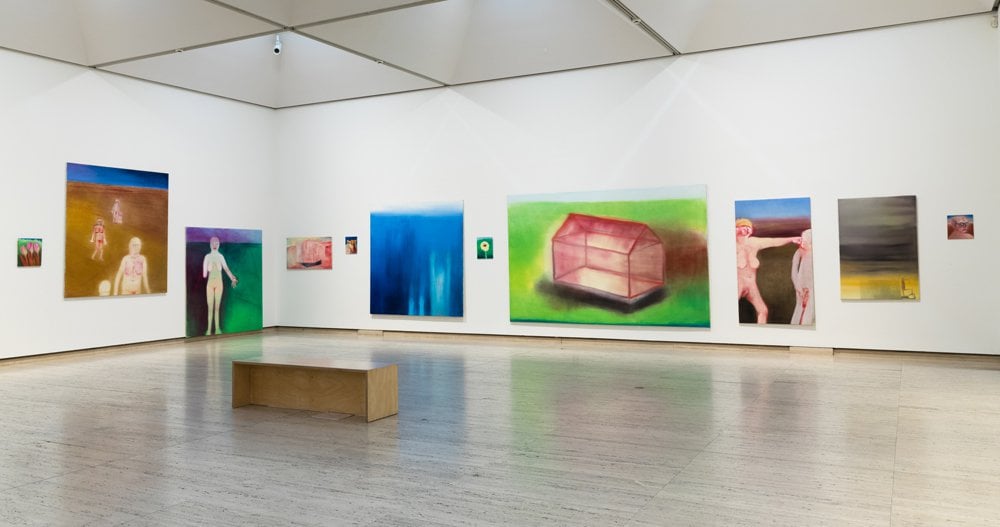Home Participants 21st Biennale of Sydney (2018) Miriam Cahn
Miriam Cahn


Miriam Cahn
Born 1949 in Basel, Switzerland Lives and works in Stampa, Switzerland

The development of Cahn’s practice has relied heavily on her physical self, driving the artist’s methods and use of media. Cahn’s large-scale charcoal drawings of the late 1970s and 1980s were produced by working directly on the floor, often without artistic implements, evading any mediative distance between technique and subject matter. Traces of this process, including fingerprints and other marks, are often visible in her works, linking the resultant image with the performative gesture.
Cahn’s series of four charcoal drawings, Reading in dust, the wild love (Lesen in staub, das wilde lieben), 1984, were created in this way. Depicting scenes teeming with energy and movement, the female figures in the drawings revel in bodily experience, carrying out base actions removed from shameful or indecent associations. Motivated by impulse, Cahn’s drawings rejoice in the actuality of the human body.
In the 1990s, Cahn moved towards oil painting, introducing colour into her visual vocabulary when observing the efficacy of mass-media images and advertising. Describing the logic behind her inclusion of colour, Cahn has said: ‘The first oil paintings, of course, were elementary in their statement, simple only with three colours. For me, colour was always a complication. And because I wanted to work quite directly and physically at first, I intentionally left out colours in order not to slow it down with an intermediate step.’
Cahn’s implementation of colour is highly considered, as demonstrated in the presentation of her more recent paintings at the Art Gallery of New South Wales. In MARE NOSTRUM, 2015–16, Cahn applies a fleshly red to highlight the figures’ enlarged genitals, indicating fecundity and sexual potency. Links to sexuality and fertility in Cahn’s paintings are frequently denoted by the colour red, as in gezeichnet (drawn), 14.08.2016 and o.t., 07.02.2016.
Presentation at the 21st Biennale of Sydney was made possible with generous assistance from Pro Helvetia
Shaped by the emergence of second-wave feminism, Miriam Cahn’s artistic practice contends with the materiality of the body, asserting the basic substance of the physical form. At once haunting and ambiguous, Cahn’s works investigate the different meanings connected to our bodily reality – namely abjection, vulnerability and ignobility. Cahn treats figurative subjects with an abstract sensibility, using basic objects and motifs to talk about complex socio-political concerns. Despite living and working in a remote alpine region in Switzerland, Cahn’s work is very much tied to current affairs.